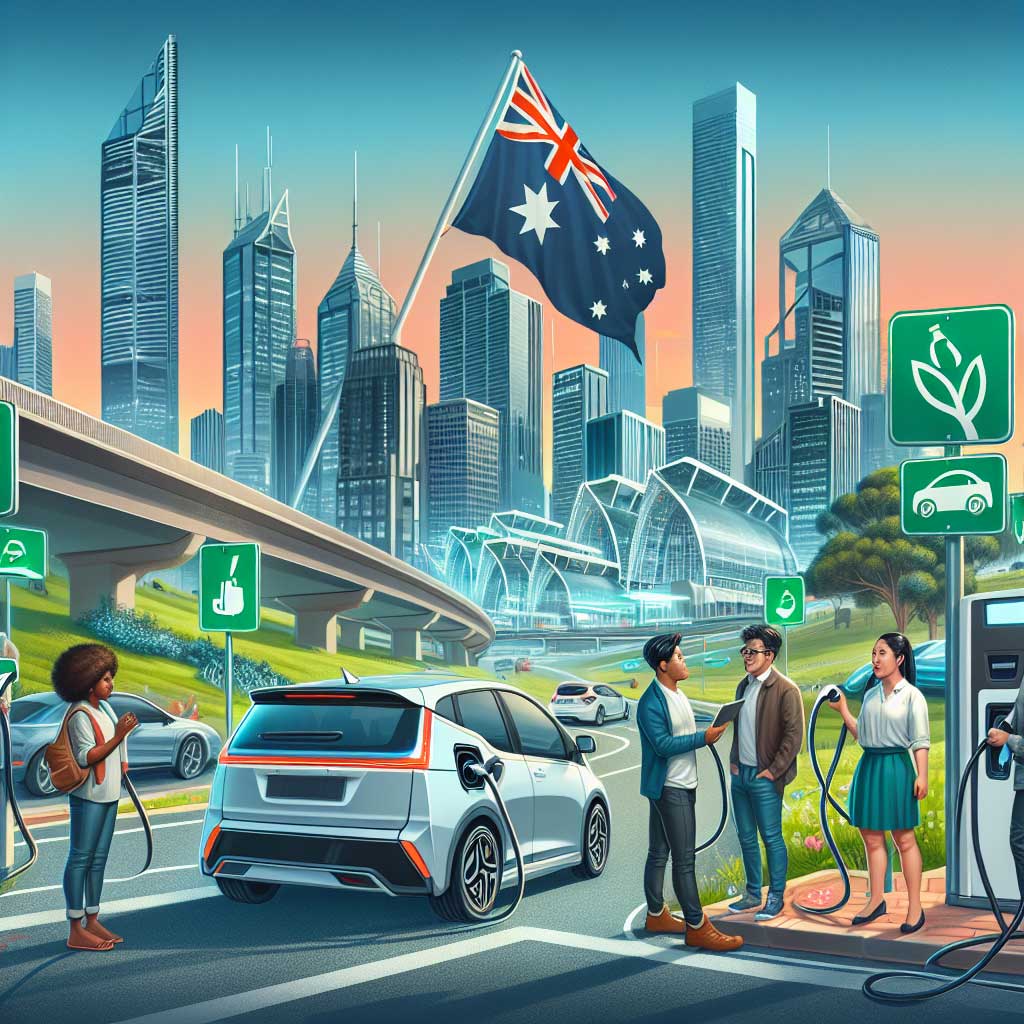
The shift towards electric vehicles (EVs) is accelerating globally, and Australia is no exception. However, for many prospective buyers, a nagging concern persists: range anxiety. This fear—the worry that your EV battery will run out of charge before you reach your destination or a charging point—is one of the biggest psychological hurdles to adoption.
But here is the exciting news: in 2025, with the proliferation of new, affordable models and a rapidly expanding charging network, range anxiety for daily Australian driving is, for all intents and purposes, solved.
This article will cut through the noise, profile the most popular and affordable entry-level EVs available on the Australian market today, and demonstrate why their real-world range capabilities make them more than sufficient for the vast majority of drivers.
Demystifying EV Driving Range
Before diving into the cars, it’s crucial to understand how EV range is measured. The industry standard globally is the WLTP (Worldwide Harmonised Light Vehicle Test Procedure) figure. This testing process is designed to be a better predictor of real-world driving than older standards, taking into account various driving phases, speeds, and even temperature effects.
For Australian daily commuters and city drivers, a WLTP range of 300km to 400km is often more than enough. Consider that the average Australian drives only about 30 to 40 kilometres per day. This means most affordable EVs can cover an entire week’s worth of commuting on a single charge. For longer weekend trips, a quick stop at a DC fast charger, which can add hundreds of kilometres of range in the time it takes to grab a coffee, makes interstate travel entirely feasible.
The New Guard: Affordable EVs Transforming the Australian Market
The most significant change in the last two years has been the arrival of genuinely affordable, long-range EVs from new players, particularly those from China. These models are directly competing with, and often undercutting, traditional petrol-powered cars, making the switch to electric a financially sound decision from day one.
Here is a look at some of the most popular and affordable entry-level models currently reshaping the Australian EV landscape:
1. BYD Dolphin
The BYD Dolphin has arrived with a splash, taking the title of one of Australia’s cheapest EVs, demonstrating a clear commitment to mass-market appeal.
- Price: Starting from under $30,000 (plus on-road costs) for the entry-level Essential model, and the Premium variant is also aggressively priced.
- Range (WLTP):
- Essential (44.9 kWh battery): 340 km
- Premium (60.5 kWh battery): 427 km
- Practicality: As a compact hatchback, the Dolphin is perfect for urban and suburban life. It offers surprisingly spacious interior packaging thanks to its dedicated EV platform. Its range is highly suitable for weekly commutes and most weekend excursions. The ability to achieve over 400km in the Premium model effectively banishes range anxiety for all but the most committed long-haul drivers.
2. MG4
The MG4 has quickly established itself as a dynamic, fun-to-drive, and highly practical electric hatchback, giving established brands a serious run for their money.
- Price: Starting from around $37,990 (drive-away) for the base model, it provides exceptional value for its size and performance.
- Range (WLTP):
- Excite 51 (51 kWh battery): 350 km
- Excite 64 (64 kWh battery): 450 km
- Long Range 77 (77 kWh battery): 530 km
- Practicality: Built on a dedicated EV platform, the MG4 offers a good balance of sporty driving dynamics and everyday utility. Its wide range of battery options means buyers can choose a model perfectly suited to their budget and range requirements, from an excellent city runabout to a genuine long-distance cruiser. Its rear-wheel-drive platform and practical hatchback body make it a compelling choice for a first or second family car.
3. GWM Ora
Known for its distinctive, retro-inspired styling, the GWM Ora provides another highly accessible entry point into the Australian EV market.
- Price: Starting from around $35,990 (drive-away), the Ora is positioned as a direct competitor in the budget EV segment.
- Range (WLTP):
- Standard Range (48 kWh battery): 310 km (Note: Some models may offer a higher range depending on the latest update, such as 400km for the Lux variant).
- Extended Range (63 kWh battery): 420 km
- Practicality: The Ora is a stylish and compact city car, ideal for urban drivers who prioritise aesthetics and manoeuvrability. While its boot space is slightly smaller than some rivals, its generous passenger space and competitive range in the Extended model make it a strong contender for those wanting a fun, eye-catching EV that can still handle a road trip.
4. Tesla Model 3 (Rear-Wheel Drive)
While generally positioned slightly higher on the price scale, the entry-level Tesla Model 3 remains a pivotal and popular choice due to its range, charging network access, and brand cachet.
- Price: Starting from approximately $54,900 (plus on-road costs).
- Range (WLTP):
- Rear-Wheel Drive: 513 km (with 18-inch wheels)
- Practicality: The Model 3 offers an excellent combination of range, performance, and advanced technology. Its real advantage is access to the vast and highly reliable Tesla Supercharger network, making long-distance travel significantly easier and faster than with many other brands. The sedan body is sleek, and while the boot opening is smaller than a hatchback, it offers generous storage space, including a ‘frunk’ (front trunk).
The Charging Network: The True Range Anxiety Cure
An affordable EV with 350-450km of range is only half the solution; the other half is a reliable charging network. The good news is that Australia’s fast-charging infrastructure is growing rapidly. Government and private investment is seeing DC fast chargers (50kW and above) being installed along all major national highways, key regional routes, and in urban centres.
For the daily driver: Charging is predominantly done at home overnight using a standard wall socket or a dedicated wall box charger. You simply plug in when you get home, and wake up to a “full tank” every morning. This fundamentally changes the refuelling habit, making it simpler and cheaper than visiting a petrol station.
For the road-tripper: Planning a trip is now easier than ever. Apps and in-car navigation systems can seamlessly route you via fast-charging stops. A 20-30 minute stop for a high-speed charge is perfect for a quick break, a snack, and stretching your legs before continuing the journey.
Key Takeaway for the Reader
The dream of an affordable, practical EV is no longer a future aspiration—it is the current reality. EV pricing is coming down, and great, affordable options with more than sufficient real-world range are readily available now.
The competition between manufacturers like BYD, MG, and GWM is driving prices lower, while continuous battery improvements are pushing range figures higher. For the average Australian, any one of the entry-level models profiled here will cover their daily needs, weekly errands, and most domestic road trips without breaking a sweat, or the bank.
Need more information? The world of EVs is exciting but complex. Whether you have a question about charging speeds, state-specific incentives, or which model is best for your unique lifestyle, the EV evolution Chatbot is on standby 24/7 for any EV-related questions you might have.
FAQs
How far will an EV go in real-world Australian driving?
Real-world distances vary by model and conditions. Many entry-level EVs now deliver 300-450 km WLTP, which typically translates to slightly lower real-world figures depending on temperature, load and speed. For most Australians this covers a week of commuting; longer trips are feasible with brief public charging stops.
Is a 300-400 km WLTP range enough for most drivers?
Yes. Given average daily travel of roughly 30-40 km, a 300-400 km WLTP range is sufficient for most households’ daily needs and weekly errands. If you frequently undertake long-distance travel or tow, consider higher-capacity battery options.
How long does it take to charge an EV?
Charging time depends on charger power and vehicle acceptance rate. Home AC charging on a typical wallbox (7-11 kW) takes several hours to overnight for a full charge. Public DC fast chargers (50 kW to 350 kW) can add a substantial portion of range in 15-40 minutes depending on the car.
How much does it cost to charge compared with petrol?
Residential electricity costs per kilometre are generally lower than petrol costs per kilometre. Public fast-charging prices vary by operator and location; they are more expensive than home charging but still often competitive against petrol, especially for efficient EVs. Exact costs depend on your electricity tariff and local charger pricing.
Will the battery degrade and how long will it last?
Batteries degrade slowly. Modern EV batteries commonly retain a large portion of their capacity for many years. Most manufacturers offer multi-year warranties covering battery capacity; typical warranty terms are around 7-10 years or specific kilometre limits.
What’s the best way to charge at home?
Install a dedicated AC wallbox (7-11 kW) installed by a certified electrician. This provides safe, faster overnight charging than a standard power point. Check whether your state or council offers rebates or incentives for home charger installations.
About EV Evolution
EV Evolution is the leading online platform dedicated to Australian electric vehicle owners and enthusiasts. We foster a vibrant community, delivering essential EV news and insights, and enhancing user engagement through our innovative, AI-powered chatbot for dynamic discussions. Our mission is to empower Australian electric vehicle owners and enthusiasts by fostering a vibrant, AI-driven online community that connects, informs, and advances the nation’s electric vehicle landscape.




